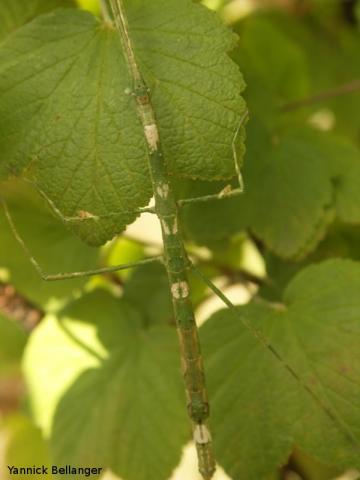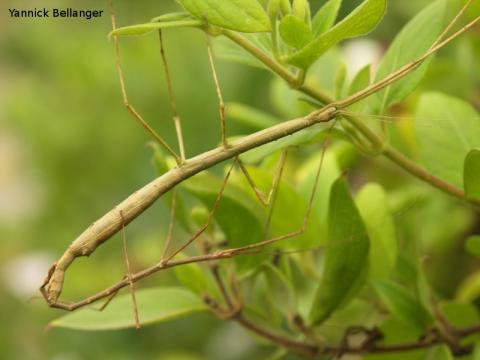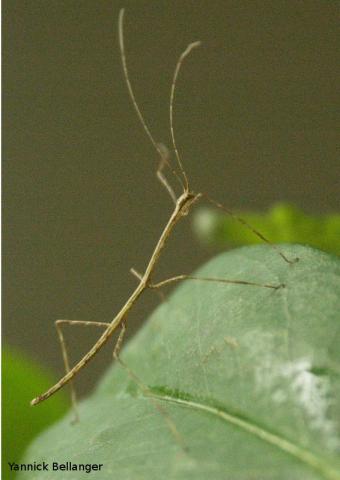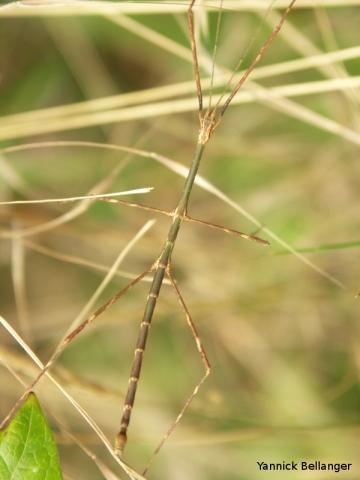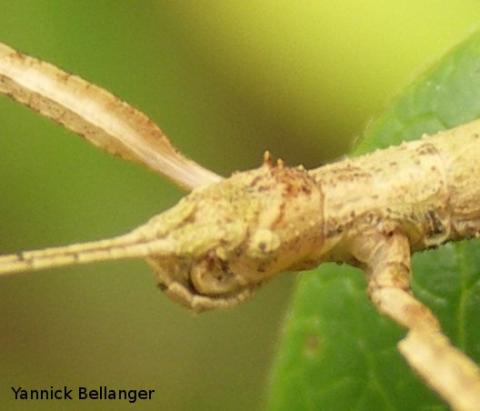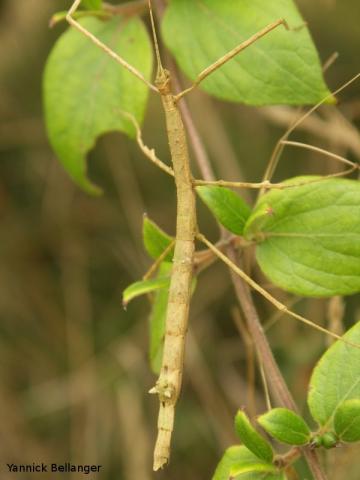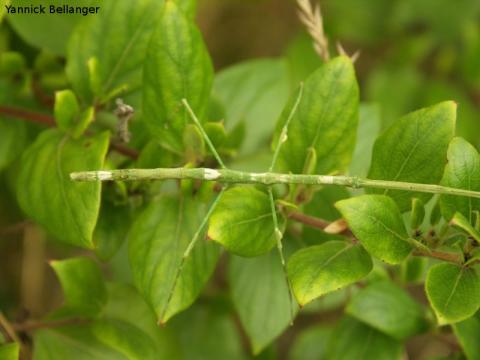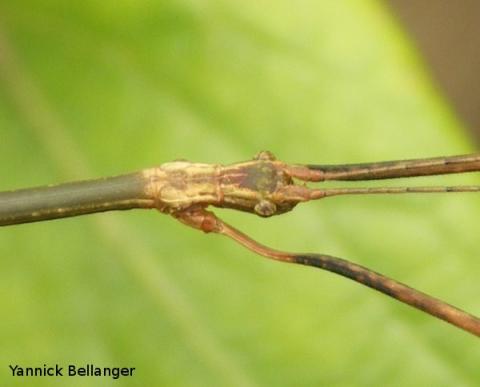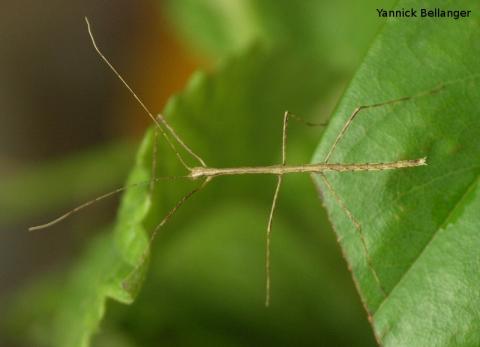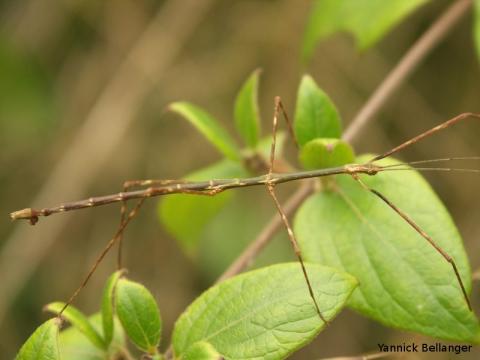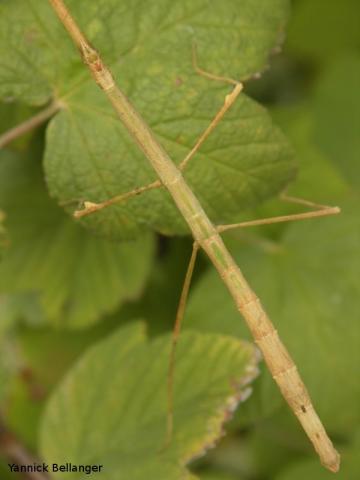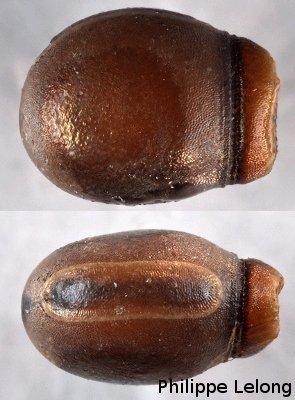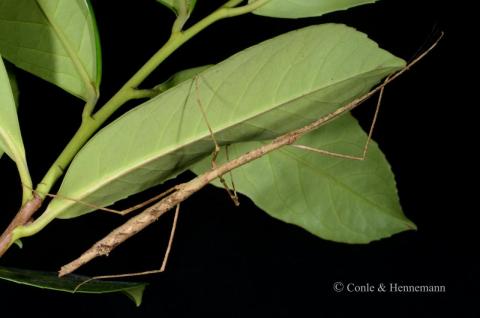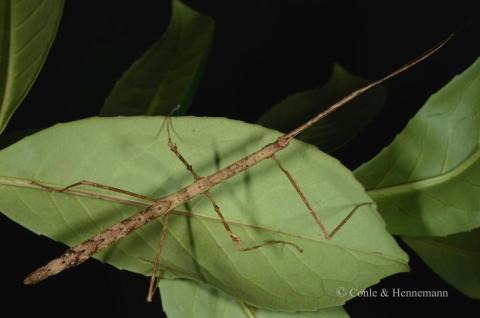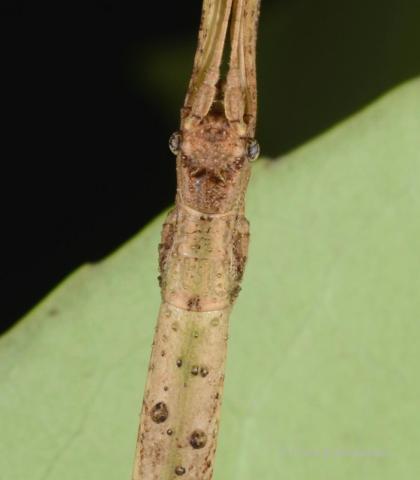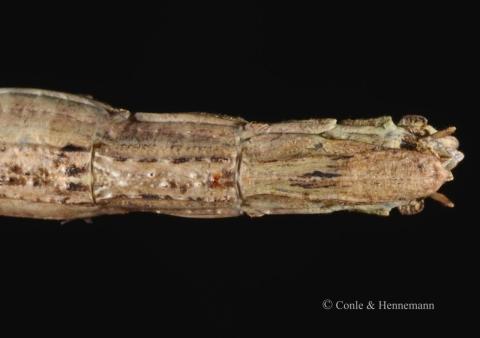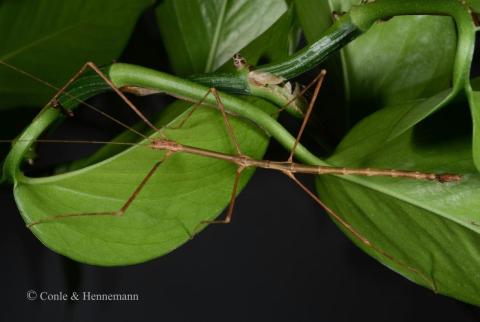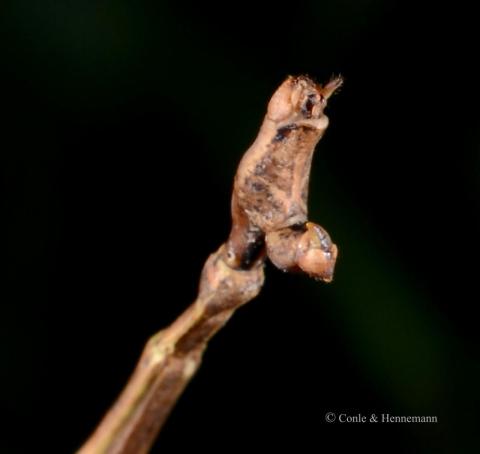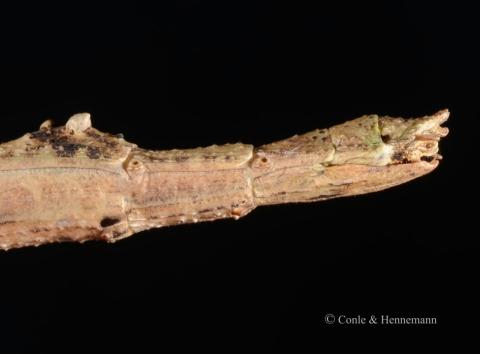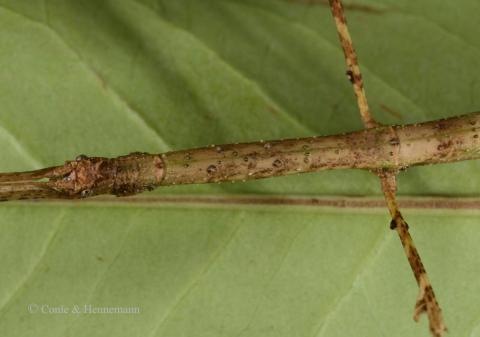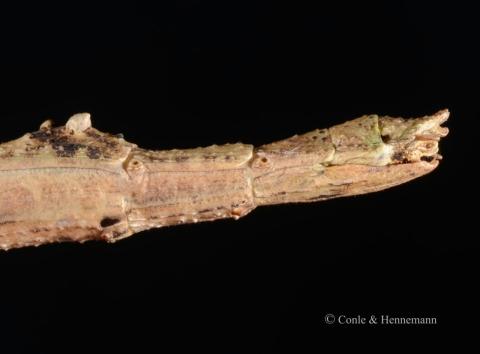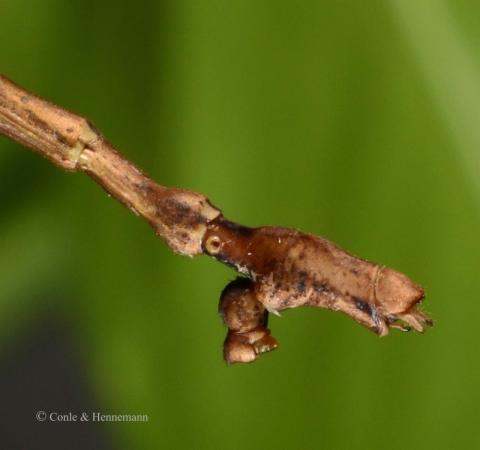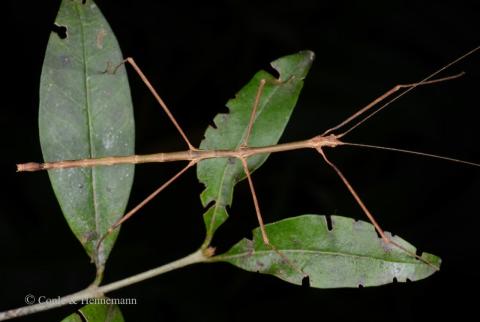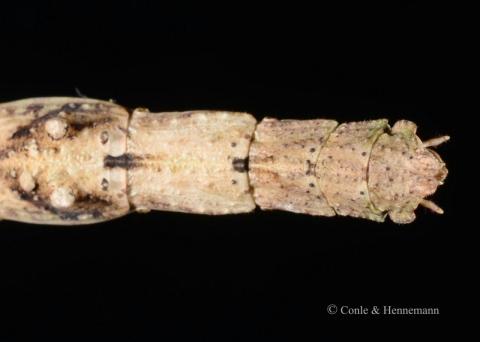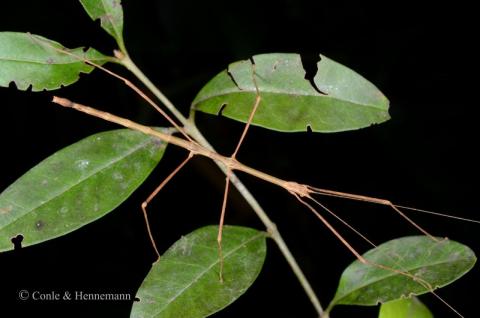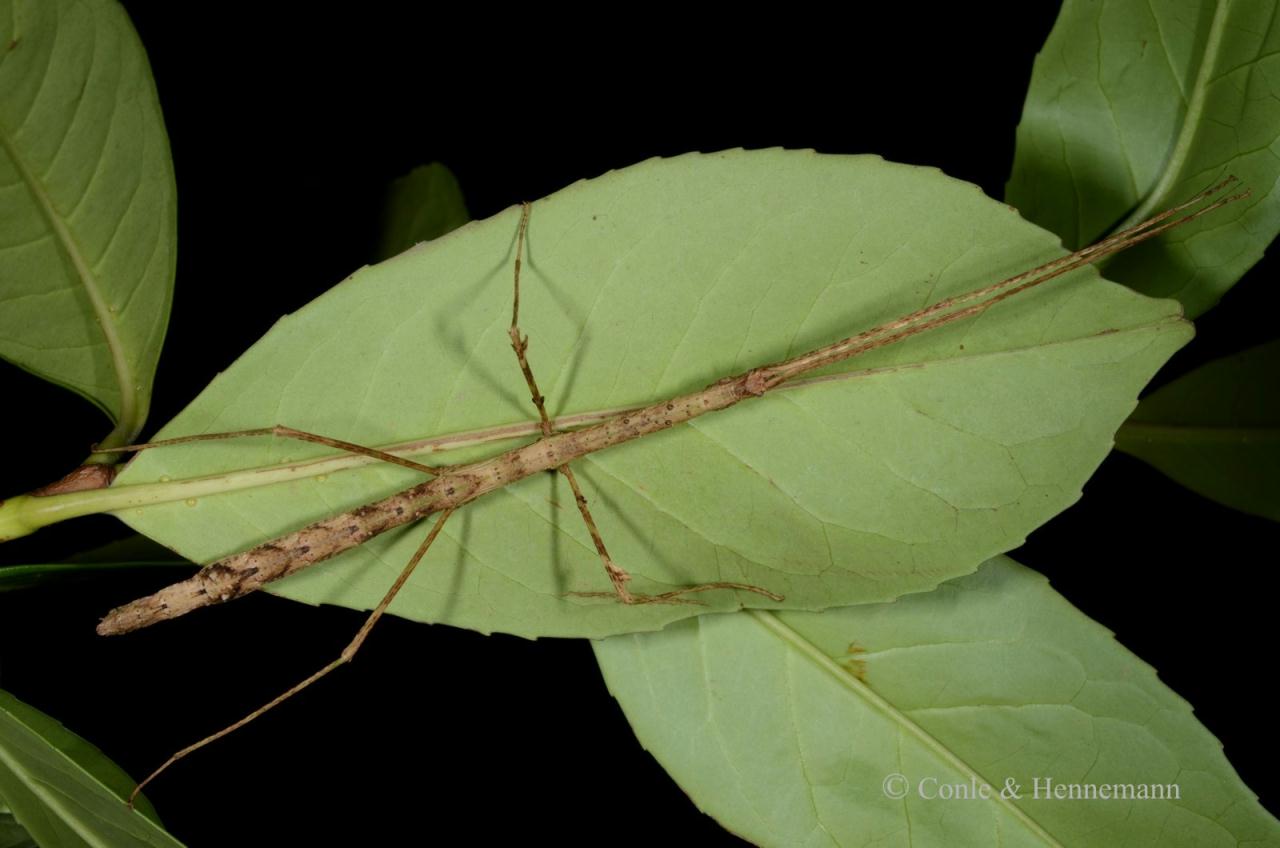
Genus
Species
Stock
CLP
536
PSG
354
Culture status
Unknown
Foodplants
Lonicera nitida
Bramble (Rubus spp.)
Privet (Ligustrum spp.)
Gonzalagunia hirsuta
Pachystachys coccinea
Breeding notes
NOTE 2018 (Pablo Valero): This stock has been misidentified as C.trinitatis but it is actually C.jamaicana.
(Care sheet by Yannick Bellanger, ASPER)
General Notes
- 2008 - first description of the female of this species by Yannick
Bellanger (France) and Frédéric Langlois (France) after an
expedition in Tobago. Unsuccessful attempt of culture - 2010 - first successful culture by Yannick Bellanger
- 2012 - first distribution of surplus by ASPER
_________________
Origin
- Trinidad
_________________
Females
- fine and elongated species
- between 6 and 9 cm
- coloration very variable from a female to an other : green, brown, grey, with or without mottlings of white or brown
- some female are smooth on the abdomen but most of them have some large tubercles, especially on tergum VI
- antennae usualy longer than the extremity of fore legs
_________________
Males
- fine and elongated, smaller than females
- between 5 and 6 cm
- coloration not variable, brown
- legs annulate
- antennae a little bit shorter than the body
- very characteristic and conical subgenital plate
_________________
Nymphs
- greyish body
_________________
Eggs
- globulous and smooth brown capsule
- total length is about 2.8 mm
- very lengthened micropylar plate
- brown to dark brown oval operculum, with a yellowish lamellar excrescence
_________________
Food Plants
- honeysuckle (Lonicera sp.)
common and winter green garden plant, is well accepted by nymphs and adults - bramble (Rubus sp.)
very common and winter green plant, well accepted by nymphs and adults - privet (Ligustrum sp.)
common winter green garden plant, quite well accepted by nymphs and adults - many other plants of the Rosaceae family
- in the wild, this species eats Gonzalagunia hirsuta and Pachystachys coccinea
_________________
Behaviour
- typical nocturnal species, nymphs and adults spend the day time in the branchs and under leaves
- matings can occur for a quite long time, even during the day, but males do not stay with the same female
- if taken by a leg, nymphs and adults can easyly brake it (autotomy)
_________________
Development
- incubation (on wet peat at 18-20°C) is about 3 months, until 5 months
- males are adults (at 18-22°C) in a little bit more than 4 months, females in 4,5 to 5 months
- eggs are thrown at random
- adults live for several months
_________________
Breeding Notes
- an easy to keep species, in a humid cage with a little bit of ventilation
- nymphs can be kept with adults
- I spray water to nymphs and adults about 2 times per week
_________________
References
- Langlois & Bellanger, « Inventaire des Phasmatodea de Tobago », Bulletin de la Société entomologique de France, 117 (1), 2012 : 91-110
- Phasmida Species Files (www.phasmida.orthoptera.org)
